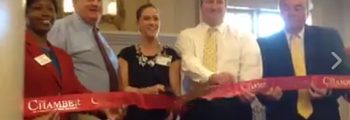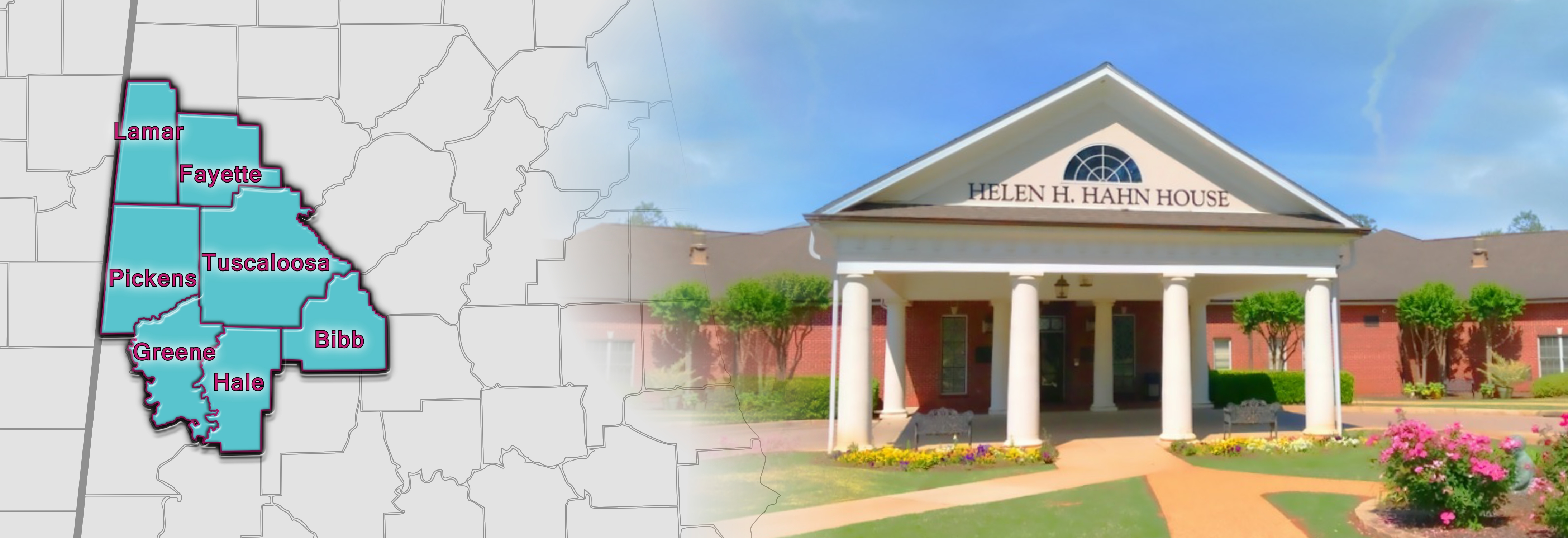With technical assistance by the West Alabama Health Council, Hospice of West Alabama (HOWA) was incorporated in 1980 as a private, non-profit organization dedicated to serving the terminally ill and their families. The initial impetus for hospice came from FOCUS on Senior Citizens. Later, the Health Council coordinated the planning and development activities with representatives from many community services. Led by its president, J. Jefferson Bennett, and continuing assistance from the Health Council, the HOWA Board of Directors proceeded to define its mission, goals and objectives. The planning process helped members to develop an understanding of the hospice philosophy and its applicability to the unique needs of our community. Because of the newness of hospice and limited funds, the initial program was planned as a service of volunteer support and coordinated community resources with donations from churches and individuals and a demonstration grant from the United Way. HOWA employed its first Executive Director, Madeleine Hill, on a part-time basis in 1982. During the first few months of that year, policies and procedures were developed and the first volunteers were recruited. The first volunteer training was a weekend retreat, at participants’ own expense, and was primarily for people who were to be the initial care team, training faculty or referral sources. From the 24 attendees, a core team was developed, and HOWA served its first patient/family in May 1982. Five physicians on the Board of Directors rotated the medical supervision that first year, and most core services were provided by volunteers. By October 1982, HOWA was well underway. Selected nurses from the Home Health Care Agency of North Alabama were providing services, and 60 volunteers had been recruited and trained. Dr. Robert Posey became the first Medical Director, and by the end of the first 12 months of service, 45 patient/families had been served. Hospice became increasingly recognized in the community during its first few years of operation, and request for service often exceeded the program’s capacity. In 1984, Dr. George Miller became the Medical Director, HOWA became a United Way member agency, and the Tuscaloosa County Medical Society donated $5,000 for program development. HOWA grew steadily in the beginning. Serving 40 patients in 1982, 56 patients in 1985, and in 1986 served 65 patients. Also in 1986, Julie Sittason was hired as the new full-time Executive Director. The agency was still mostly served by volunteers at this time, as the agency was still being funded by grants and donations. In her first months at HOWA, Sittason worked to remove the waiting list for care and expand the agency’s coverage area by hiring part-time nurses, and using nurse volunteers who would see patients after leaving their full-time day jobs. In the mid 1980’s, Hospice became a covered Medicare cost, and in 1989 HOWA received its Medicare Certification, followed by Medicaid Certification in 1990. With the addition of these funding sources and continued fundraising and support of the community, HOWA was able to increase staff and expand its services to all of Tuscaloosa County and some surrounding areas while not losing its original mission to provide care to all who needed it. Under Sittason’s leadership, HOWA continued to grow and provide care to hundreds of patients and families each year. In 1998, HOWA became the first freestanding hospice in Alabama to become a Joint Commission Accredited Agency. This accreditation was an honor and a tribute to many hours of hard work by Sittason and her staff. With TJC behind it, HOWA focused its efforts on the construction of an Inpatient Hospice Facility where the terminally ill could come in their time of need instead of the acute care hospital. The planning and design phase of the facility began in 2000 with the selection of an architect and planned site visits for the next year. During the next two years many hours were spent on designing the new facility, selecting a suitable location, conducting needs assessments and feasibility studies, and fundraising. In 2000 HOWA began working with the Tuscaloosa VA on developing an Enhanced Use Lease for some 3.17 acres located on their campus. The Inpatient Building Committee along with the Board of Directors selected Ketchum, Inc. from Houston, Texas as the fundraising council in 2001. By the end of 2002, potential donors were being identified, capital campaign volunteers trained, and the official groundbreaking ceremony was held in December. Construction on the new inpatient facility was completed in October 2004. After state surveys and some additional modifications, the Hospice inpatient unit was officially opened on November 1, 2004, by accepting three patients on the first day. Since that date, more than 8,200 patients have come to the inpatient unit and the average daily census remains near capacity each month. In January 2005, TJC paid another visit to HOWA, the homecare and new inpatient facility passed its accreditation test with no deficiencies – a mark the surveyor stated: “had been achieved by only one other organization she had surveyed.” In 2006, the building was named the Helen H. Hahn House, through a gift made in her honor by her sons. Designed to be more like home than the sterile, medical environment of the hospital, the facility boasts features such as a family kitchen, beauty salon, rooms with adjoining screened porches, outdoor patios, family rooms with fireplaces and a gazebo and fountain in a courtyard maintained by volunteers. The facility also offers a community room available for meetings of civic, church, social clubs, etc. In 2007, HOWA celebrated its 25th anniversary of providing care to the terminally ill of West Alabama. In August 2007, Julie Sittason retired and Latrelle Hallum became the agency’s third Executive Director. HOWA continued to grow and strengthen the services it provides for the community. In November of 2007, the Sunrise Center opened; it is the center of our bereavement services and programs. As well as home to our bereavement services, The Sunrise Center also serves as a place where out-of-town families can stay when visiting a family member in the inpatient facility. In November 2010, the Sunrise Center was dedicated and re-named the Eugenia Patton Faucett Sunrise Center. In 2011, Hospice of West Alabama achieved Deemed status from The Joint Commission. Deemed status affirms that a healthcare organization not only meets but exceeds expectations for a particular area of expertise in the accreditation realm. This achievement was received by demonstrating compliance with TJC’s national standards for health care quality and safety in home care. A ribbon cutting ceremony took place on September 22, 2014, recognizing an addition to the inpatient facility. A new 4,030 square-foot wing was added to increase the number of patient rooms from 10 to 15. The addition also included another family gathering room and a medical examination room. After being in operation for over 40 years, Hospice of West Alabama has grown to become a true healthcare provider in the West Alabama area. With a multi-million-dollar annual budget and a staff of over 80 employees, HOWA serves over 700 patients and their families each year in the seven-county area it reaches.
Hospice of West Alabama Becomes Incorporated

First Executive Director Hired
First Patient/Family Served
First Medical Director Hired

New Medical Director/HOWA Becomes United Way Member Agency
Census Grows/New Full-Time Executive Director Hired
HOWA Becomes Medicare & Medicaid Certified
HOWA Becomes Joint Commission Accredited
HOWA Makes Plans For A New Facility
Inpatient Facility Opens

Facility Named The Helen H. Hahn House

HOWA Gets New Executive Director
The Eugenia Patton Faucett Sunrise Center Opens

HOWA Achieves Deemed Status From TJC
New Addition Complete

Today
